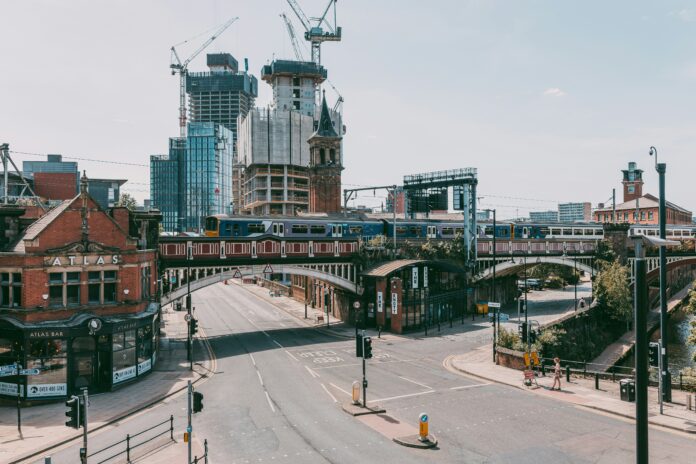For more than a decade, high-speed rail has been held up as a transformative opportunity for the North of England. The vision behind HS2 and Northern Powerhouse Rail (NPR) was not only faster journeys, but a re-shaped economy: freeing capacity on congested main lines, stimulating regeneration around new stations, and giving suppliers a steady pipeline of work.
Policy Exchange’s Instead of High-Speed Rail report was released this week to add fuel to the political storm already surrounding projects like this, where political indecision has left both the schemes and their benefits in limbo. Within the report, it discusses options away from High-Speed Rail, where it believes other schemes may deliver results at a cheaper rate.
The Case for High-Speed Rail
Done well, high-speed rail is not primarily about speed. It is about capacity. Within the industry, we know this.
This sequencing underpinned the success of high-speed systems in France, Germany and Spain. In the UK, the West Coast Main Line through Cheshire, Staffordshire and into Manchester and Liverpool is among the country’s busiest. Without additional capacity, growth in passenger numbers and freight will be constrained, particularly as the government seeks to decarbonise heavy goods transport.
Policy Exchange’s report includes a foreward from Richard Tice MP of Reform UK, a party which has been vocal in scrapping high speed projects like Northern Powerhouse Rail. The report says that the proposed HS2 to Manchester and NPR together would only remove around 10–20% of trains from the busiest approaches into Manchester Piccadilly. But without even that relief, it says the existing bottlenecks will worsen. The North’s railways already suffer from overcrowded two- or three-carriage trains; in the peak hour at Leeds almost half of departures are this short. By comparison, London’s busiest terminal runs nearly all eight-carriage trains or longer. Without a significant capacity injection, these disparities will persist, holding back commuting flows that underpin productivity.
In his foreward, Mr Tice says: “Even as the historic disaster of HS2 blows through more billions in overspending and more years of delay, even as it sucks money from things the country actually needs, even as taxes on people and business rise, ministers are about to commit to further high-speed rail schemes which could make HS2’s problems and price-tag look trivial.
“Outside a bubble of politicians, journalists and construction industry lobbyists, also exposed by this report, the voters of the North do not want, and never have wanted, a handful of high-speed rail lines, serving a handful of big cities, at fares only business people on expenses can afford.
“They want the money to be spent on the often failing railways (and roads) that they actually use. This report suggests a whole series of such improvements – including an “Elizabeth Line” for Manchester – which would deliver more, for more people, in more places, more quickly, more cheaply than any high-speed rail scheme.”
But while these discussions continue, and parts of projects are scrapped or modified (creating further costs and delays), ultimately the local economy and the rail industry supply chain suffers from uncertain pipelines and opportunities within these projects.
Economic consequences of delay
The northern economy is uniquely exposed to the consequences of stalled investment. As the National Infrastructure Commission has observed, inadequate transport systems in major UK cities outside London are a binding constraint on growth. Almost 90% of journeys are local, but inter-urban connectivity also matters for labour markets, supply chains and inward investment. Faster, more reliable rail between the North’s largest cities was a central plank of the “Northern Powerhouse” agenda because it would allow businesses to draw on deeper pools of talent and customers.
Years of uncertainty undermine this. Local authorities cannot plan regeneration confidently around new stations. Businesses considering relocation or expansion cannot predict journey times or freight capacity. Land values and private investment that were supposed to co-finance development around HS2 hubs will potentially remain unrealised. Instead of a clear pipeline, councils and investors face an ever-changing set of promises and cancellations.
Impact on the supply chain
The rail supply chain also suffers – some of which we are already seeing through uncertain pipelines and delays. It has only been three months since ‘the reset button’ was pushed on HS2. Large, long-term projects such as HS2 were expected to support thousands of jobs in design, engineering, manufacturing and construction across the UK. Policy Exchange’s report points out that eight of the ten private-sector directors of the Northern Powerhouse Partnership work for firms with commercial interests in HS2. These firms – from major contractors to specialist SMEs – invested in staff and facilities on the assumption of a steady flow of work. When phases are cancelled or delayed, those investments risk being stranded.
For smaller companies in particular, “stop–start” procurement is costly. They do not have the balance sheets to retain skilled staff during fallow periods or to bid repeatedly for redesigned projects. Uncertainty also discourages new entrants, reducing competition and innovation in the supply base. In the long term, the UK may lose capacity and expertise to overseas markets if domestic high-speed projects do not proceed on a clear timetable. This is such a significant underlying risk caused by political uncertainty around rail projects.
Without decisive progress, there is a risk of a vicious circle. Congested existing lines depress service quality and reliability, making rail less attractive to passengers and freight operators. Lower patronage weakens the business case for investment. Meanwhile, suppliers scale back or exit, pushing up the costs of future schemes. This dynamic has been evident in other sectors where long-term capital programmes were repeatedly changed.
Stopping the uncertainty – getting sequencing and scope right
Policy Exchange’s alternative proposals – an “Elizabeth Line for the North,” widespread electrification, longer trains – are aimed at achieving similar capacity and connectivity benefits at lower cost. But they also depend on clear political commitment. A piecemeal approach without an overarching plan risks delivering neither a modernised local network nor the high-speed spine that could relieve it.
International experience suggests two lessons. First, high-speed rail should be integrated into a wider regional network plan. France and Spain upgraded commuter and regional lines before and alongside their high-speed routes. Second, stability of policy matters as much as funding. Germany’s high-speed programme took decades but proceeded on an agreed corridor plan, giving suppliers and regions certainty to invest.
The current debate in Westminster – whether to revive HS2’s northern leg, build a “HS2 Light,” commit to NPR or switch entirely to smaller schemes – illustrates the costs of indecision. For the northern economy, the absence of new capacity means continued bottlenecks, shorter trains and lost productivity. For the rail industry supply chain, it means idle operations, insecure apprenticeships and skills leakage abroad.
If ministers wish to change direction, the key is to do so transparently and definitively. A published, phased plan for northern rail capacity – whether based on a modified high-speed scheme or a network of upgrades highlighted by this report – would allow local authorities, investors and suppliers to plan. Without it, the North risks another decade of announcements without delivery, while its transport constraints continue to drag on growth. The decision needs to be made soon.
High-speed rail in the North was conceived not simply as a prestige project but as a mechanism to release capacity and stimulate growth. Prolonged political uncertainty has left those benefits unrealised. Whether through HS2, NPR or alternative schemes, what matters now is a clear, deliverable pipeline of investment. Without it, the northern economy and the UK rail industry’s supply chain partners stand to lose the most.





